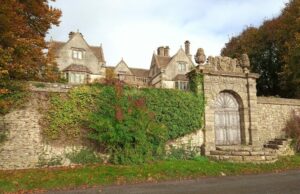With archives presently closed because of the pandemic, resuming research into the career of the restorer of ancient houses and maker of gardens rose to the top of my list of projects because much of it could be conducted from my desk. Reggie Cooper first caught my attention in 2006; in between other projects I continued my ‘quest for Reggie’, returning to it full time in the summer of 2020 after completing the article on Honor Balfour.

Cold Ashton Manor, near Chippenham, Reggie Cooper’s second renovation project. Photographed October 2020.
With archives presently closed because of the pandemic, resuming research into the career of the restorer of ancient houses and maker of gardens rose to the top of my list of projects because much of it could be conducted from my desk. Reggie Cooper first caught my attention in 2006 as the amateur architect of the delightful neo-classical orangery for the politician Sir Philip Sassoon (1888-1939) at Trent Park. In between other projects I continued my ‘quest for Reggie’, returning to it full time in the summer of 2020 after completing the article on Honor Balfour.
Using internet and printed sources and boosted by access to family material, correspondence with those with stories to share or working on related topics, and information generously shared by June Davey, historian at West Horsley Place, in Surrey (which Reggie’s mother, Lady (Marion) Cooper owned between 1921 to 1931) I’ve revised my lists of the houses in which Reggie lived and those he knew through his friendships with other enthusiastic restorers of dilapidated old houses. There’s still more research to do, once the archives at the Royal Institute of Architecture (RIBA) and the Royal Horticultural Society (RHS) reopen to researchers but a more comprehensive narrative of his life is emerging.
